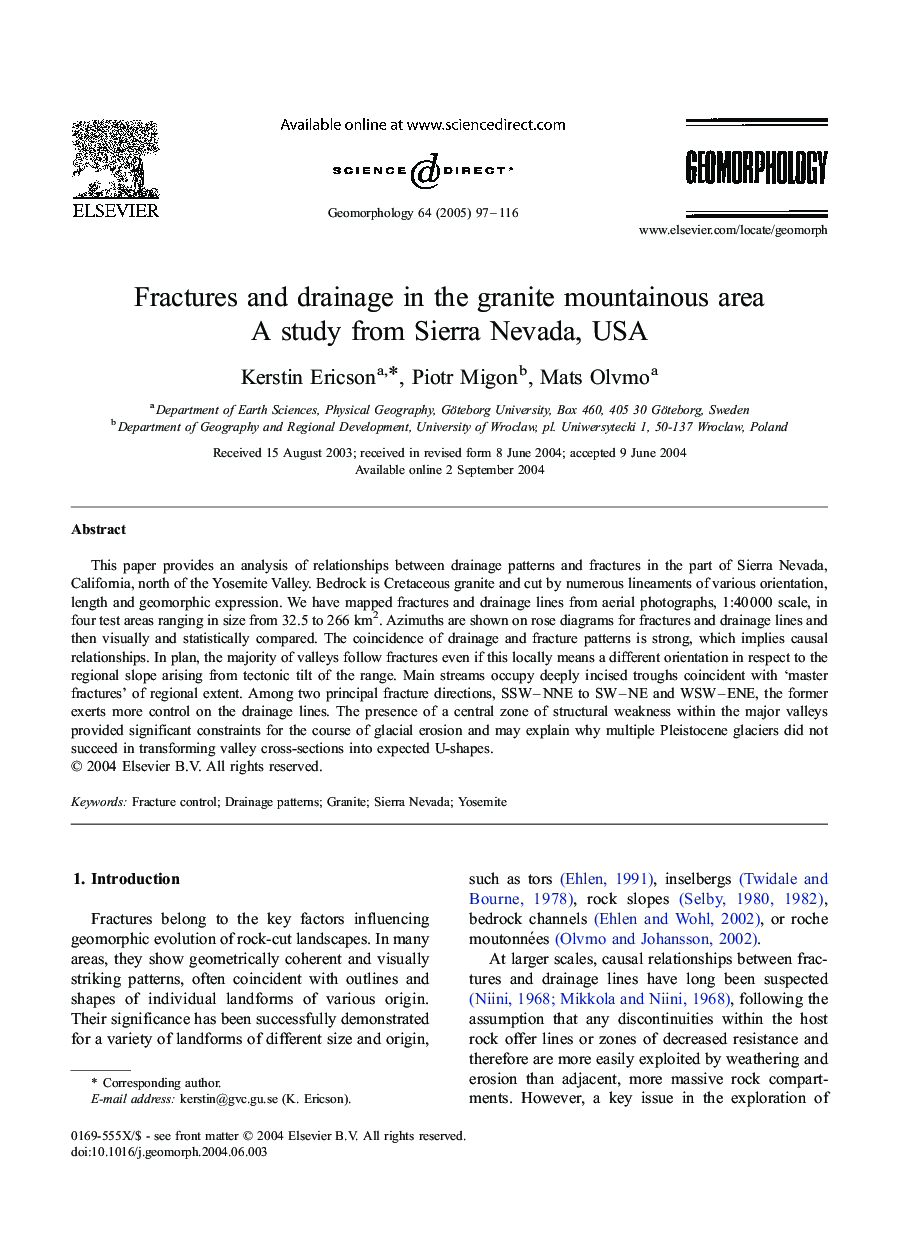| Article ID | Journal | Published Year | Pages | File Type |
|---|---|---|---|---|
| 9524995 | Geomorphology | 2005 | 20 Pages |
Abstract
This paper provides an analysis of relationships between drainage patterns and fractures in the part of Sierra Nevada, California, north of the Yosemite Valley. Bedrock is Cretaceous granite and cut by numerous lineaments of various orientation, length and geomorphic expression. We have mapped fractures and drainage lines from aerial photographs, 1:40Â 000 scale, in four test areas ranging in size from 32.5 to 266 km2. Azimuths are shown on rose diagrams for fractures and drainage lines and then visually and statistically compared. The coincidence of drainage and fracture patterns is strong, which implies causal relationships. In plan, the majority of valleys follow fractures even if this locally means a different orientation in respect to the regional slope arising from tectonic tilt of the range. Main streams occupy deeply incised troughs coincident with 'master fractures' of regional extent. Among two principal fracture directions, SSW-NNE to SW-NE and WSW-ENE, the former exerts more control on the drainage lines. The presence of a central zone of structural weakness within the major valleys provided significant constraints for the course of glacial erosion and may explain why multiple Pleistocene glaciers did not succeed in transforming valley cross-sections into expected U-shapes.
Related Topics
Physical Sciences and Engineering
Earth and Planetary Sciences
Earth-Surface Processes
Authors
Kerstin Ericson, Piotr Migon, Mats Olvmo,
